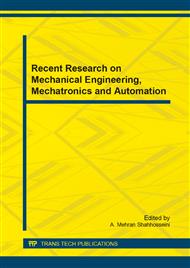p.127
p.133
p.138
p.143
p.147
p.154
p.160
p.167
p.173
Numerical Prediction of Flow Structure and Heat Enhancement with Different Dimple Depth
Abstract:
Aim at finding the relation between flow structure and heat enhancement, this paper change the dimple depth to print diameter from 0.06 to 0.3, with an interval of 0.02, and keep the print diameter constant. Through vortex structure analysis and Nu number integration, find out that: Vortex structure varies with dimple depth. Shallow depth dimple induces horseshoe vortex; middle depth dimple induces symmetric tornado-like vortex; deep depth dimple induces tornado-like vortex. Heat enhancement is closely related to vortex structure. Where spiral separation focus point exists, there the lowest Nu/Nu0 exists. Flow impingement at the windward side of dimple and new viscous layer generation at immediate plane after the dimple enhance heat transfer. The highest Nu/Nu0 exists in the sharp rearward dimple edge. From Fig 6, the deeper the dimple is, the higher the average Nu/Nu0 is, so does the pressure drop. But from 0.06 to 0.2 dimple, heat enhancement increased because of vortex structure changed. From 0.2 to 0.3 heat enhancement increased because of the increased area.
Info:
Periodical:
Pages:
147-153
Citation:
Online since:
July 2014
Keywords:
Price:
Сopyright:
© 2014 Trans Tech Publications Ltd. All Rights Reserved
Share:
Citation:


